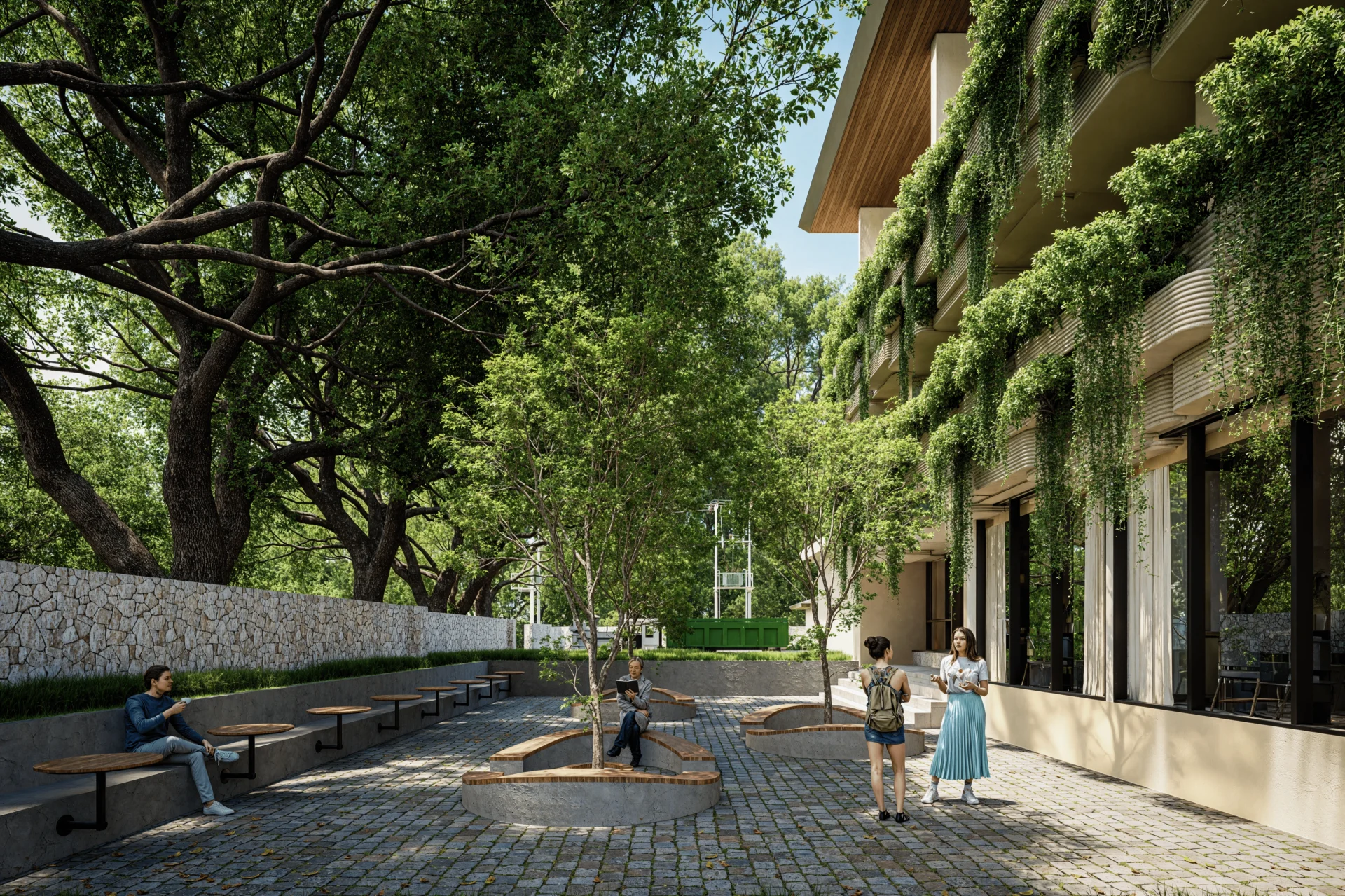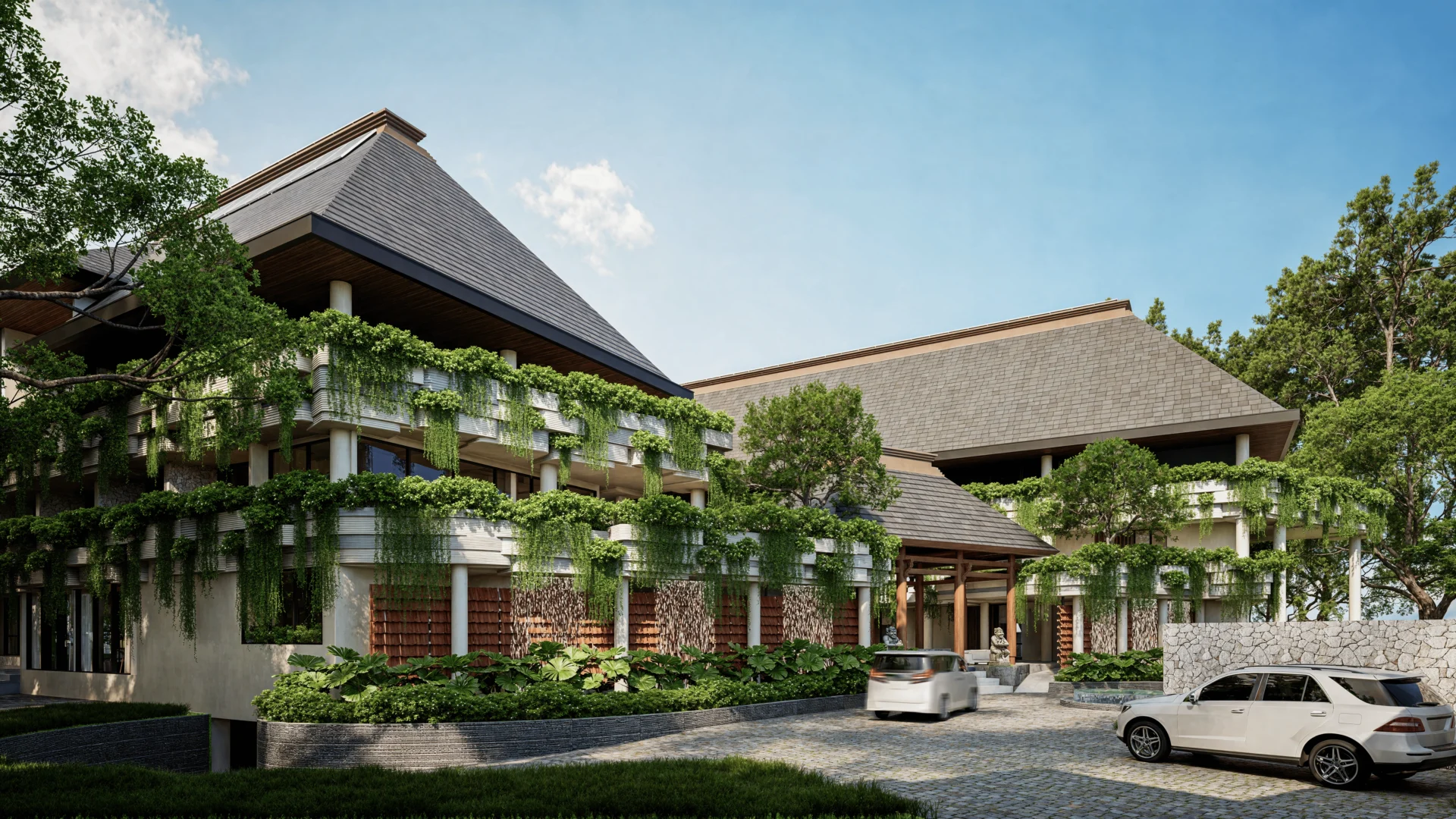Have you ever walked by a building and felt something calming like the green creeping over stone, vines cascading down facades, and plants thriving in places you would expect bare concrete? Let’s call it green walls architecture.
We understand that the feeling of nature entwined with design is powerful. It reminds us that architecture does not just shelter us, but it can heal us, lift us, even reconnect us to nature.
Green walls architecture is not just an aesthetic choice, it is a design statement with deep value for our well-being and planet. So, let’s explore together what it is, why it is trending, and how you (yes, you) can leverage green walls to elevate your property’s value, wellness, and beauty.
Shall we begin?
What Is Green Walls Architecture?
Green walls also called vertical gardens or living walls are panels of plants installed vertically onto building facades or inside interior walls. Whether outdoors clinging to a balcony or inside a lobby, these walls are living: They grow, change with light and season, and contribute to the building’s character.
Even in recent years, green walls have become central in sustainable architecture and biophilic design. They bring nature into built environments in ways that enrich aesthetics, comfort, and environment around our closest encounter with nature which is our home. Now, they are no longer a fringe idea but a major trend shaping how we build and how we live.
Learn how biophilic architecture connects us to nature in surprising ways.
2025 Trends: How Green Walls Are Evolving
As of 2025, here are how green walls architecture is growing with the era of climate crisis:
1. Smart Systems and Automation
Modern green walls now integrate smart technologies such as:
- Automated irrigation
- Humidity and light sensors
- Self-watering systems
Those systems are making them efficient and low-maintenance. These innovations not only reduce water use but also ensure plants thrive naturally over time, and our Toya Raga project applied these principles thoughtfully, earning 2nd place in the Architectural Design Competition Natadesa Apartment 2025 for its seamless blend of sustainability, technology, and design.
2. Green Walls + Biophilic Urban Design
In dense urban environments, green facades play an important role in softening the cityscape. They help reduce heat absorption, support local biodiversity, and enhance residents’ overall well-being.
By integrating green walls architecture into facades and courtyards, buildings naturally cool the surrounding air while bringing a refreshing layer of beauty and calm to the urban experience.
Take another example from our biophilic design architecture for Mapogu.
3. Wellbeing and Workplace Design
Offices, public buildings, and healthcare spaces are increasingly adopting green walls to foster productivity, support patient recovery, and promote mental well-being. More than just decorative features, these living walls bring a restorative quality, turning everyday spaces into environments that heal, inspire, and connect people with nature.
4. Environmental Performance Metrics
Designers today take a more data-driven approach that is measuring CO₂ reduction, thermal comfort, energy savings, and indoor air quality. Green walls architecture is no longer valued for aesthetics alone, but for their measurable impact and clear return on investment.
Benefits Beyond Aesthetics

Green walls architecture offers multi-dimensional benefits. Beyond their visual appeal, they bring measurable impact to environmental health, well-being, energy efficiency, and even property value.
But the real question is, what can green walls architecture truly bring to your property?
1. Visual Appeal and Architectural Integration
Imagine a blank wall transformed into a tapestry of greens, textures, and shadows. Green walls soften rigid architecture, break monotony, create contrast, and add layers of interest. Whether used inside or outside, they draw attention, become focal points, conversation starters.
In a residence, they signal luxury and care. And in commercial or hospitality spaces, they can become signature design elements.
2. Environmental and Health Benefits
Here are real results from research we gather for you:
- A study in a shared office space found that green-living walls (VGWs) decreased room temperature by ≈ 3-5°C, lowered CO₂ levels (by as much as ~5-50%), and saved energy (≈ 20%) when ventilation systems adjusted accordingly. (ScienceDirect, 2023)
- Another study monitoring indoor corridors showed green walls significantly improve indoor air quality by reduced PM (particulate matter), lower CO₂, better temperature and humidity levels. (MDPI, 2021)
- People who spend time in buildings with green walls architecture often experience a noticeable lift in mood, improved focus, and less fatigue throughout the day. The simple presence of greenery and natural patterns has a calming effect which reduces stress and helps the mind feel more at ease. (MDPI, 2024)
3. Improved Market Appeal and Premium Value
Properties with green walls stand out. Potential buyers or tenants see them as healthier spaces, eco-conscious, and luxurious. That translates into willingness to pay more, faster sales.
Also Read: Boost Sales with Smart Architecture in Business
4. Operational Savings and Environmental Efficiency
Reduced energy consumption (less cooling needed), improved insulation, lower carbon emissions, better air quality are all of which can lower ongoing costs and make property more sustainable.
5. Long-Term Durability and Brand Equity
When you design with nature, with story, you create something memorable. Projects like our Toya Raga become benchmarks. They grow in character rather than look dated. It builds brand reputation for you (or for your client as a property owner) as someone who cares about quality, environment, and people.
Also Read: Manon Wins Natadesa Competition With Luxury Apartment Architecture Design
How Manon Design Studio Integrates Green Walls Architecture
When we take on a project, we aim to weave green walls naturally into both design and story. For us, it is not “add a plant wall somewhere”, it is “how can nature be part of the narrative of this place?”
Here is how we do it:
- We start by understanding the site like the sunlight exposure, climatic conditions, views, structural load, and humidity.
- We select plant species that are local or well-adapted, that need minimal water, minimal maintenance so the green wall thrives without becoming a burden.
- We create layered designs with perhaps an interior vertical garden in a lobby that connects visually with exterior greenery or façade green walls with climbers that soften edges and provide shade.
- We integrate green walls with lighting, textures, and materials so that they become part of the architecture, not an afterthought.
If you have seen our Toya Raga or any biophilic design architecture project, you will remember how green walls were used to bridge the indoor and outdoor spaces which let nature flow through spaces.
Have a look at Manon’s design below!

Green walls architecture is more than a style trend because nature is not just decoration of our lives, nature should be our value as a human who is living closely to nature. Especially in Bali, our culture is all about the connections between the soul and the earth. When a building is done right, it breathes life into walls, homes, and properties that are taking care of our bodies, our planet and enhancing worth in both emotional and market terms.
If you are feeling inspired to bring true green walls into your space that are not just elegant, but also alive… Manon Design Studio is here to partner with you.
Contact us today to begin your journey toward architecture that lives.
